Are you new to knitting or crochet and not sure where to start? Perhaps you've been crafting for years but there are still a few holes in your knowledge (if not your knitting!). Even if you're a seasoned pro, you'll likely have some queries so we've answered a few of our most commonly asked crafting questions below – whether you're completely stuck or just want to know more.
Q: Does it matter what yarn I use for my next project? What's the difference between them?
A: There are many types of yarn, each made from different fibres, and these can be animal-based, plant-based or man-made. Wool, mohair, silk, cashmere, llama, alpaca are all commonly used animal fibres and and are made up of protein. Cotton and linen (flax) are vegetable fibers, while synthetic fibers include acrylic, nylon, polyester, metallics and microfibers. There are pros and cons to each as every material has its own qualities, so for this reason they are often blended together when the yarn is spun. When purchasing any product it is always important to research the ethical aspects, particularly when it comes to animal-based yarns, but where your project is concerned, you shouldn't have to worry. Your knitting or crochet pattern will usually direct you to which yarn you need to use, so just follow the instructions.
Q: My pattern calls for a specific yarn but I can't find it anywhere! Does this mean I can't do the project?
A: Don't worry, all is not lost! If you can't find the exact yarn, there are other indications to look for that will help you find a similar one. Yarn labels will usually tell you the recommended gauge and needle or hook size, so you can always work backwards to find the next best thing. Look for a yarn that has the same recommendations and you should get similar results from your project. The one thing you should always remember is to make a swatch for your particular pattern, just to be sure your chosen yarn will work.
Q: I want to learn how to knit but I'm left-handed. Will this affect anything?
A: Don't worry, anyone can learn to knit and you definitely shouldn't be put off by patterns. Even though the majority are written for people who use their right hand, there are ways around this. Many lefties like to learn the continental method where the yarn is held in and manipulated by the left hand, but this doesn't mean you can't learn the English technique too. No matter what hand you use, every beginner requires practice for knitting to feel comfortable and natural and there are numerous books, videos and websites dedicated to helping you learn how to knit left-handed. So don't feel down-hearted!
Q: I’m new to knitting and crochet and would like to make items to brighten up my home in time for summer. Do you have any ideas that aren’t too intricate?
A: This season is perfect for trying out new techniques with small but impressive interior projects, and you can use yarn with vibrant colours for maximum effect. It’s great to hear that you are eager to use your talents to spruce up your living space, but don’t be put off by patterns even if you think you can’t master them — a challenge is what makes us better crafters! To get into the swing of things, why not try creating these fun tea towel trims, or start a sampler blanket? If you are feeling adventurous, have a go at whipping up these adorable animal jar cosies to liven up your kitchen!
Q: I want to take up arm knitting. Do I need to invest in need any products?
A: Arm knitting has taken the stitching world by storm and the beauty is, there are no needles you have to bother with! You don’t even have to be a master knitter — novices can pick it up with ease, as it is follows a completely different structure to conventional knitting. The results are also impressive. You’ll be able to make chunky-look garments and cosy blankets with very loose stitches for a more casual look. Use a chunky merino yarn, or if you prefer a less bulky style, try arm knitting with a standard DK.
Q: I'd like to refresh my stash – what can I do to use up old scraps of yarn?
There are a whole host of ways that you can make use of the oddments of yarn in your stash. If you're a fan of colourful pieces and have lots of small scraps, you can whip up a lovely mismatched blanket or rug if you're keen to create a good-sized item. Alternatively, crochet flowers make pretty embellishments and a lovely finishing touch for other projects or garments. Use them on hats, scarves, jumpers or even on their own, or as ready made decorations for future projects. If you want to help the wildlife, why not leave some yarn ends out for the local birds, who will be very grateful for extra material to line their nests with!
Q: I'd like to start knitting and crocheting for charity. Where should I start?
A: It's great that you're thinking in such a positive way because there are lots of ways you can improve the life of others through your craft! If you'd like to get started straight away then why not get cracking on a blanket? Like other warm clothes, these are always in demand to help keep vulnerable people and animals warm — especially in times of crisis. If a blanket is a bit of a stretch, there are many charities which accept square donations as well. Alternatively, rally the troops and ask your friends to contribute a few blocks each.



















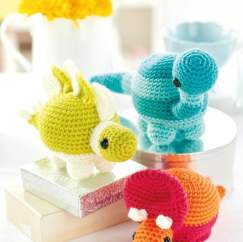
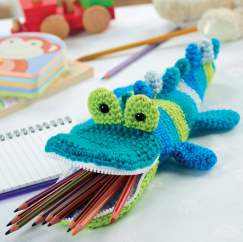
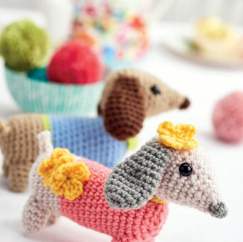
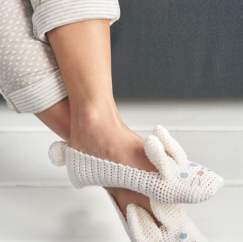
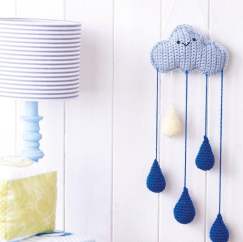
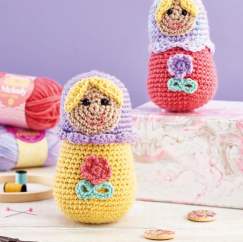

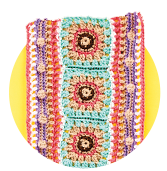 Crochet-along
Crochet-along
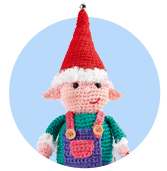 Christmas
Christmas
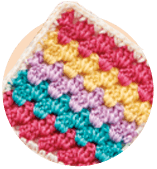 Granny Squares
Granny Squares
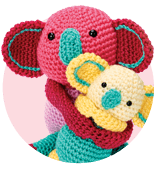 Toys
Toys
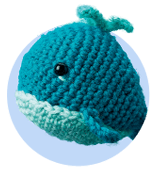 Amigurumi
Amigurumi
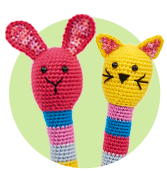 Baby
Baby
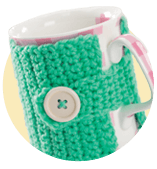 Homewares
Homewares


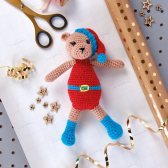







Share